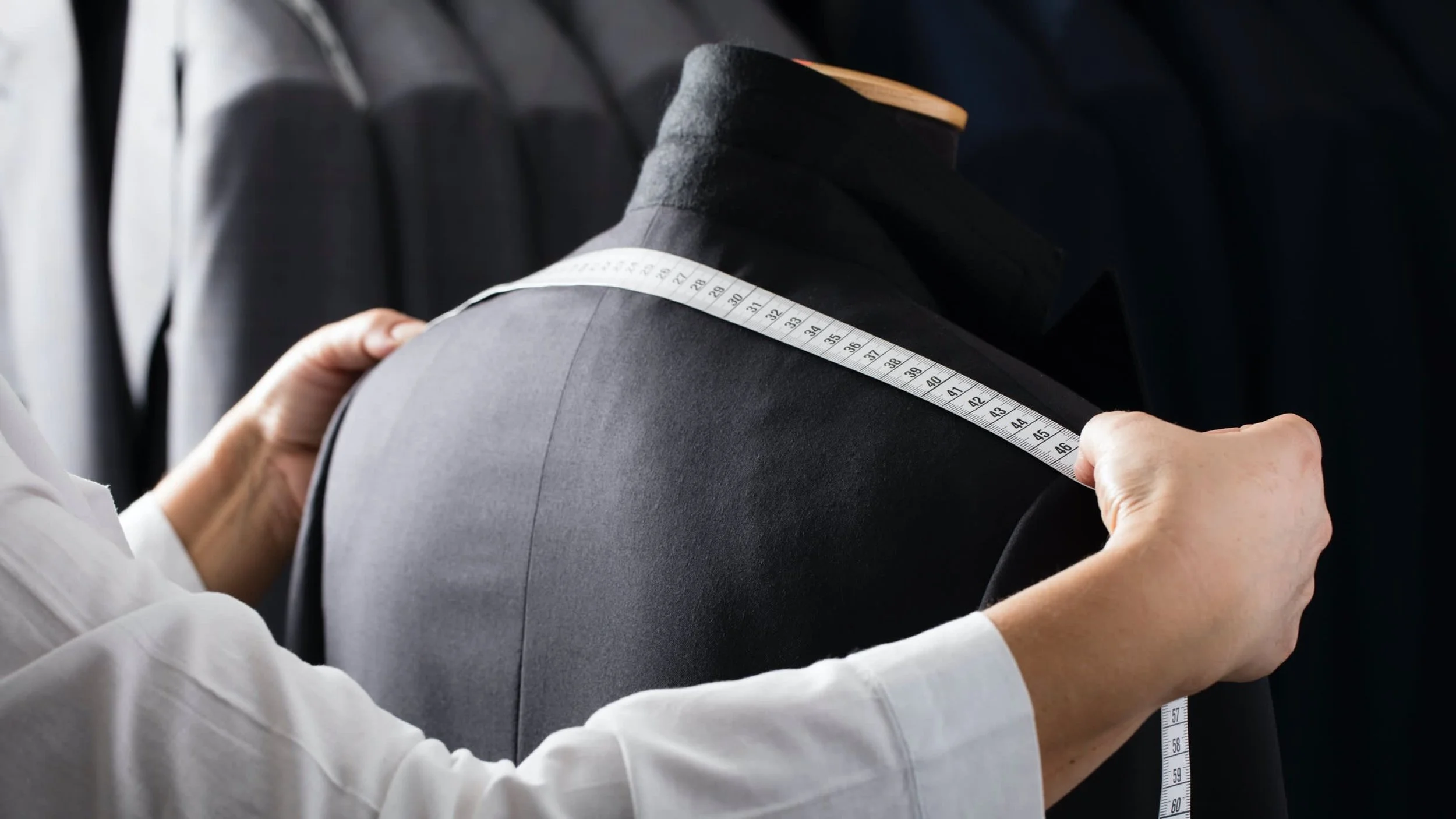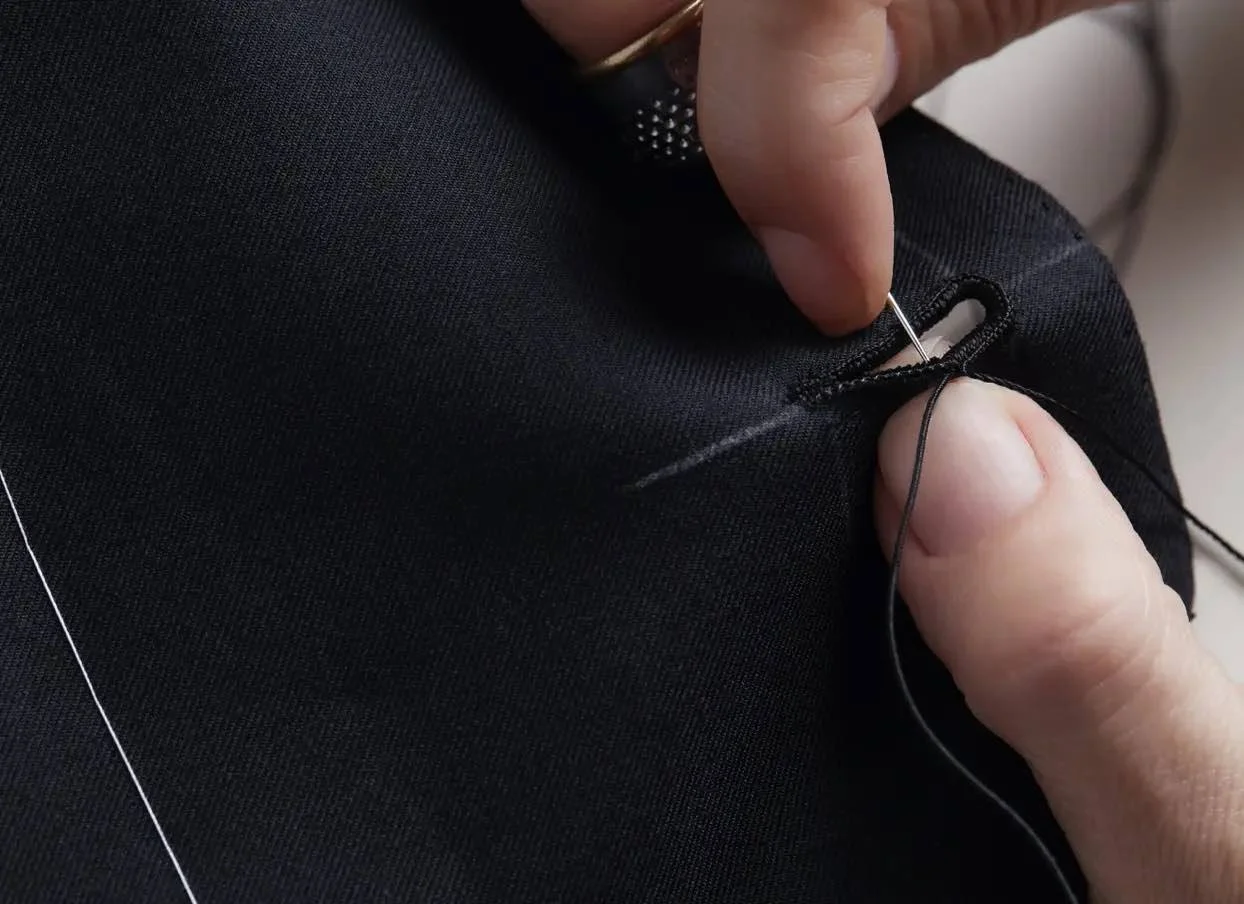FLATTERING MENSWEAR FOR THE TALL & THE SHORT
A Guide to Suit Style
This guide explores how to choose a suit that complements your body shape, specifically focusing on height. Whether tall, short, or average, subtle design choices in a suit can enhance or balance your physique. While height and proportions are fixed, the right suit—whether ready-to-wear (RTW), made-to-measure (MTM), or bespoke—can create a polished, flattering silhouette. These suggestions are not rigid rules; prioritize what aligns with your style and comfort.
-
For shorter men aiming to appear taller, the goal is to create clean, uninterrupted lines that elongate the figure and avoid adding bulk.
Jacket Choices
Fit: Opt for a close-fitting jacket to minimize excess fabric, which can overwhelm a smaller frame. Avoid overly loose sleeves, waist, or hips.
Shoulders and Chest: Choose moderate or soft shoulder padding with minimal chest drape for a sleek silhouette.
Buttoning: A one- or two-button jacket with a low buttoning point maximizes lapel length, creating a longer, more athletic-looking chest V-shape. More buttons shorten lapels and add horizontal lines, which can truncate the figure.
Skirt Length: A slightly shorter jacket skirt (below the waist) lengthens the legs, but avoid ultra-short “bum freezer” styles that look trendy rather than timeless.
Vents: High vents or a ventless jacket enhance the illusion of height, especially if you avoid placing hands in pockets.
Pockets and Lapels: Skip ticket pockets, large flaps, or patch pockets, as they add bulk. A higher lapel notch can further elongate the torso.
Trouser ChoicesThe trouser line is critical for adding height:
Waist Height: High-waisted trousers at the natural waist (around the belly button) elongate the legs and create cleaner pleat lines. If a lower rise feels more comfortable, keep the leg slim with sharp front creases.
Cuffs and Break: Avoid cuffs or excessive trouser breaks, which disrupt the leg line. Aim for a clean back and a slight front break (achieved by angling the trouser hem).
Fabric and Color: Choose darker, finer worsted wools for a sharp silhouette. Avoid pale tones, bright colors, or large patterns like checks, which add width. A fine pinstripe can elongate the figure.
Accessories
Shoes: Dark, sleek shoes maintain the streamlined look.
Ties: Simple, solid ties avoid visual clutter. Skip contrasting sports jackets or bold waistcoats that break the outfit’s continuity.
Example: A one-button dark navy suit with a low buttoning point, slim high-waisted trousers with minimal break, and a plain tie creates a sleek, elongating effect.
-
For taller men, the goal is to break up the vertical lines to avoid appearing lanky, adding visual interest and balance.
Jacket Choices
Fit and Details: Embrace elements that interrupt the silhouette, such as ticket pockets, patch pockets, or a waistcoat. A belt adds a horizontal break.
Shoulders and Chest: Bolder shoulder padding or more chest drape can add width.
Buttoning: A three-button jacket or a double-breasted style shortens the lapel line and adds bulk.
Patterns: Broad checks or bold stripes create visual breadth, countering height.
Vents: Lower vents or double vents add texture and break the vertical line.
Trouser Choices
Waist and Fit: A lower-rise trouser with cuffs or a fuller leg adds width and interrupts the leg line.
Break: A larger trouser break or cuffs creates horizontal lines, reducing the appearance of leg length.
Fabric and Color: Opt for lighter colors, textured fabrics like flannel, or bold patterns to add visual weight.
Accessories
Shoes: Brogues or textured shoes add interest and break up the outfit.
Ties and Pocket Squares: Choose textured ties (e.g., wool or shantung silk) and a pocket handkerchief to draw the eye sideways.
Cuffs: Shorter sleeves showing a half-inch of shirt cuff add a horizontal element.
Waistcoats and Watches: These accessories create additional focal points, reducing the emphasis on height.
Example: A double-breasted suit in a bold check with patch pockets, cuffed trousers, a textured wool tie, and brogues balances a tall frame with visual interest.
-
Thin Men: Follow tall men’s tactics, using patterns, textures, and accessories to add width and presence.
Larger Men: Adopt shorter men’s strategies, focusing on sleek, dark fabrics and minimal bulk to streamline the figure.
Mixed Builds: If tall and stout or short and thin, prioritize what you want to balance most. For instance, a tall, stout man might use darker fabrics to slim the frame while incorporating subtle patterns to break up height.
-
RTW Suits: When trying on ready-to-wear suits, compare how different cuts (e.g., button count, lapel width) affect your proportions in the dressing room mirror.
MTM and Bespoke: These options allow precise adjustments, like lapel height or trouser rise, to enhance your physique. Consult your tailor for personalized advice.
Fabric Selection: Test fabrics in natural light to assess color and pattern scale. Request larger swatches to visualize the suit’s impact.
Climate Considerations: In warmer climates, lightweight worsteds or cotton-linen blends maintain a sharp look while ensuring comfort.
Whether you’re tall, short, or anywhere in between, Dorsia’s Ready-to-Wear, Made-to-Measure, and bespoke suits are crafted to flatter your unique physique with premium quality and attention to detail. From sleek, single-breasted suits for shorter men to textured, double-breasted options for taller frames, explore our collection to find the perfect suit tailored to your style and proportions.










